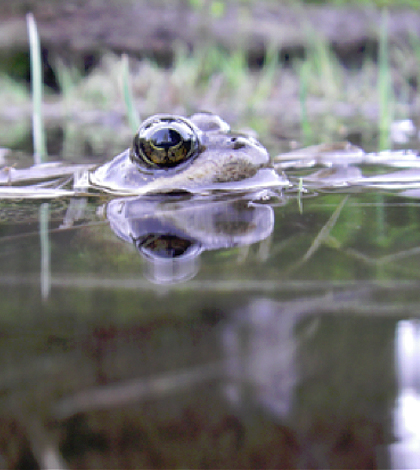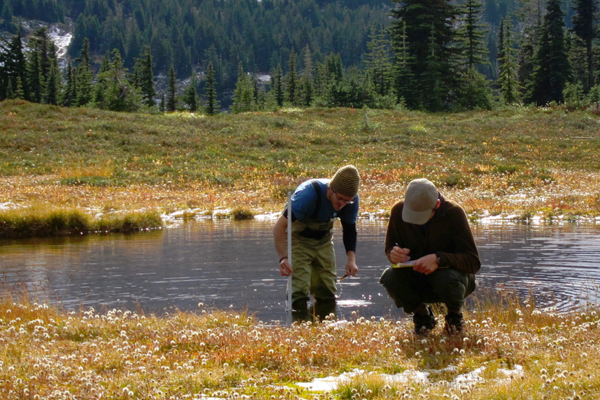Climate Changes May Lead To Habitat Losses For Pacific Northwest Amphibians

An adult Cascades frog. (Credit: Maureen Ryan / University of Washington)
Despite being hidden from the outside world, mountain ponds and wetlands are important ecosystems that help filter pollution, store carbon and provide food and habitat for many species that live in them or simply use them as stops on migratory routes. But some of these mountain areas may be at risk in a future of climate change, according to a study led by researchers at the University of Washington.
Those scientists, joined by others at Simon Fraser University and the University of Notre Dame, studied in three national parks during the work: Mount Rainier National Park, North Cascades National Park and Olympic National Park. They collected data at 121 different wetland sites throughout the parks during the summer and fall of 2012, including water levels and drying rates through manual collection methods. Temperature data-logging devices were also installed in depth transects in ponds that stretched from the edges to deeper areas.
“Because day-to-night air temperature variation is greater than underwater temperature variation, we can interpret changes in the coefficient of variation in temperature relative to changes in depth,” the study authors write in a brief summarizing the research. “We are now using hydrologic data to update and calibrate hydrologic models of wetland dynamics.”
The models let them focus on four different types of wetlands, including ephemeral, intermediate, perennial and permanent varieties. These simulations showed what sort of impacts that reductions in snowpack, higher evaporation rates and longer summer droughts could mean for the ecosystems in the future.
The results are especially bad for amphibians like frogs, toads, newts and salamanders.

Noll Steinweg and Reed McIntyre, undergraduate field research assistants at Western Washington University, collect water level data at a mountain wetland site. (Credit: Maureen Ryan / University of Washington)
“We’ve seen that the lack of winter snowpack and high summer temperatures have resulted in massive breeding failures and the death of some adult frogs,” said Wendy Palen, associate professor at Canada’s Simon Fraser University and study co-author, in a release from the University of Washington. “More years like 2015 do not bode well for the frogs.”
This is because some of the best habitat for these amphibians is projected to be lost within the next 65 years. By 2080, study authors predict that more than half of the intermediate wetlands they looked at will turn into ephemeral wetlands that are sometimes there and other times not.
The Cascades frog, which is under consideration for being listed as an endangered species, appears to be one of the most at-risk species scientists considered. It is found only at high elevations in California, Oregon and Washington. Cascades love the snow — they’re capable of surviving under tens of feet of it — but snowpack is likewise dwindling.
“It’s hard to truly quantify the effects of losing these ponds because they provide so many services and resources to so many species, including us,” said Maureen Ryan, population biologist at the University of Washington and study co-author, in a statement. “Many people have predicted that they are especially vulnerable to climate change. Our study shows that these concerns are warranted.”
Moving forward, scientists say that their findings can be used to better manage wetlands to prepare for the effects of climate change that they predict. In North Cascades National Park, for example, biologists there are already using maps the researchers have developed to prioritize management decisions related to restoring natural alpine lake habitat and to stocking ideal types of fish.
The scientists say that wetland ecosystems of the American West, including those in Mount Rainier National Park, have been affected by the introduction of fish in high-elevation areas that were once fishless.
“Predatory introduced fish generally occupy large, deep lakes, and force native amphibians and invertebrates into shallower, smaller wetlands that appear to be disproportionately vulnerable to climate change,” study authors write in the research brief. “In areas where climate change may eliminate many of the wetland habitats on which amphibians currently rely, targeted removals of introduced fish may offer an effective strategy for restoring resilience of native wetland ecosystems to climate change.”




0 comments